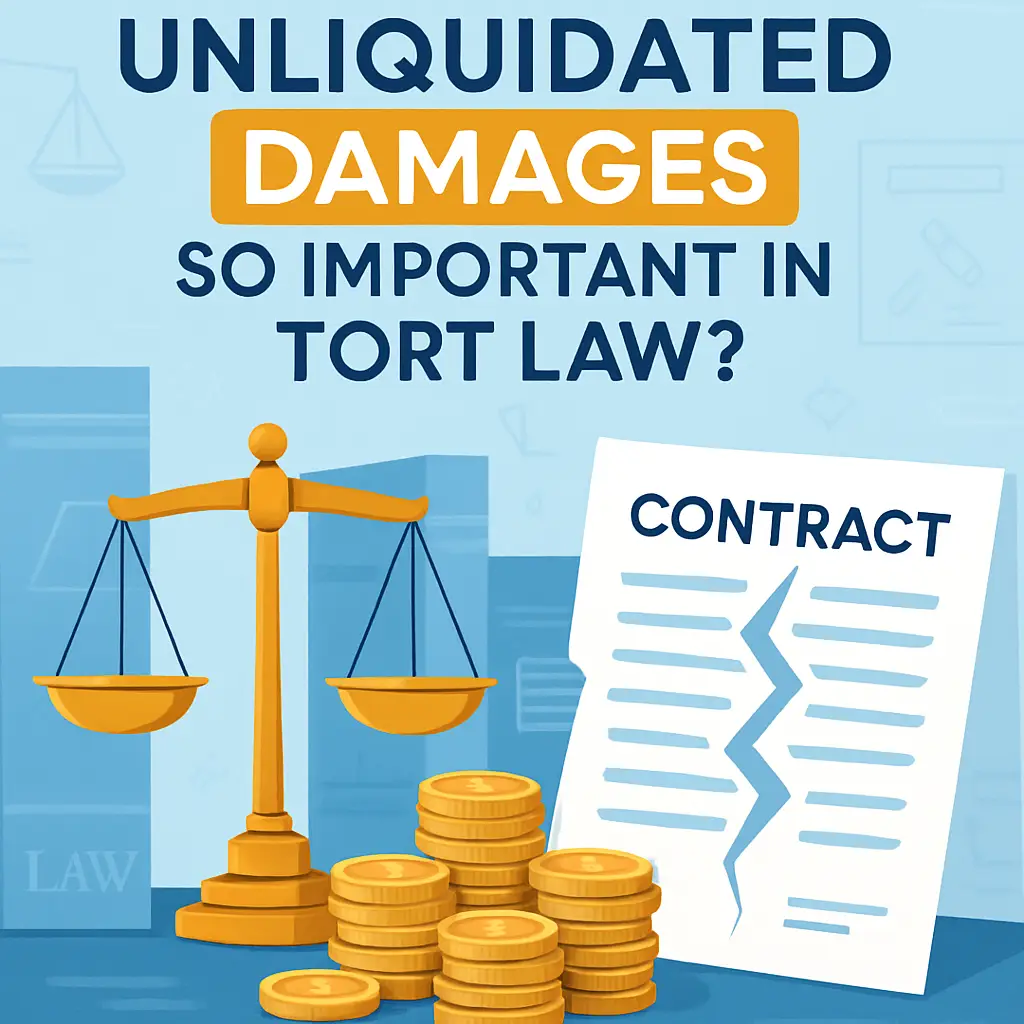When trying to understand what makes a tort unique among civil wrongs, one phrase stands out:
“A tort is redressible by an action for unliquidated damages.”
But what does this mean in practice, and why does it matter? Let’s break it down.
What Are Unliquidated Damages?
In simple terms, unliquidated damages are sums of money awarded by a court where the amount hasn’t been decided in advance. Unlike some claims, you and the other party didn’t (and usually couldn’t) agree on how much harm might be caused. When a court awards unliquidated damages, they look at the evidence and determine a fair amount to compensate the injured person—after the wrong has already happened.
Why is this significant in tort law? Because when something goes wrong (think: an accident, defamation, trespass), you can’t turn back time. The next best thing: financial compensation tailored to the harm suffered.
How Is This Different from Other Civil Wrongs?
Breach of Contract:
In contract cases, the parties sometimes include a “liquidated damages” clause—a pre-set amount for what will be owed if the agreement is broken. This makes perfect sense: when two parties plan ahead, they can estimate risks. In tort law, parties often haven’t even met before the wrong occurs, and there’s no way to foresee all potential harm—so courts step in after the fact.
Breach of Trust:
When trust property is lost or mishandled, compensation is typically tied directly to that loss, and the amount can usually be estimated in advance. Again, here damages are often “liquidated” or at least quantifiable.
Quasi-Contract:
Even though the law also imposes these obligations (like requiring someone to return money they received by mistake), the sums involved are usually definite—unlike the open-ended assessment needed for torts.
Why Are Unliquidated Damages the Core of Tort Law?
The main aim of tort law is compensation—to put the victim (as much as possible) in the position they would have been in if the wrong hadn’t happened. This can mean reimbursement for physical injuries, lost income, emotional distress, or damage to property.
Sometimes, tort law tries to do more than just “make good” the loss. For especially outrageous or harmful conduct (like unconstitutional actions by government officials), courts might grant exemplary or punitive damages as a warning to others—not just a payout to the victim. This is rare in contract law.
Even in cases where there’s no measurable loss (such as a legal right being violated but no actual harm suffered), courts may award nominal damages—a symbolic sum that recognizes your right was infringed, even if it cost you nothing.
Why Is This So Important?
If you look up definitions of tort, you’ll see this characteristic everywhere:
A tort is a civil wrong, independent of contract, for which the remedy is an action for unliquidated damages.
While courts sometimes grant other remedies (like injunctions—orders to stop a harmful action), it’s the right to unliquidated damages that fundamentally separates torts from contract breaches and other civil claims.
The Takeaway
Unliquidated damages aren’t just a technical detail. They are core to how tort law works and why it matters. The flexibility to assess harm after it occurs ensures that tort law can respond fairly to the unpredictable, unintended, and often deeply personal injuries of real life.

